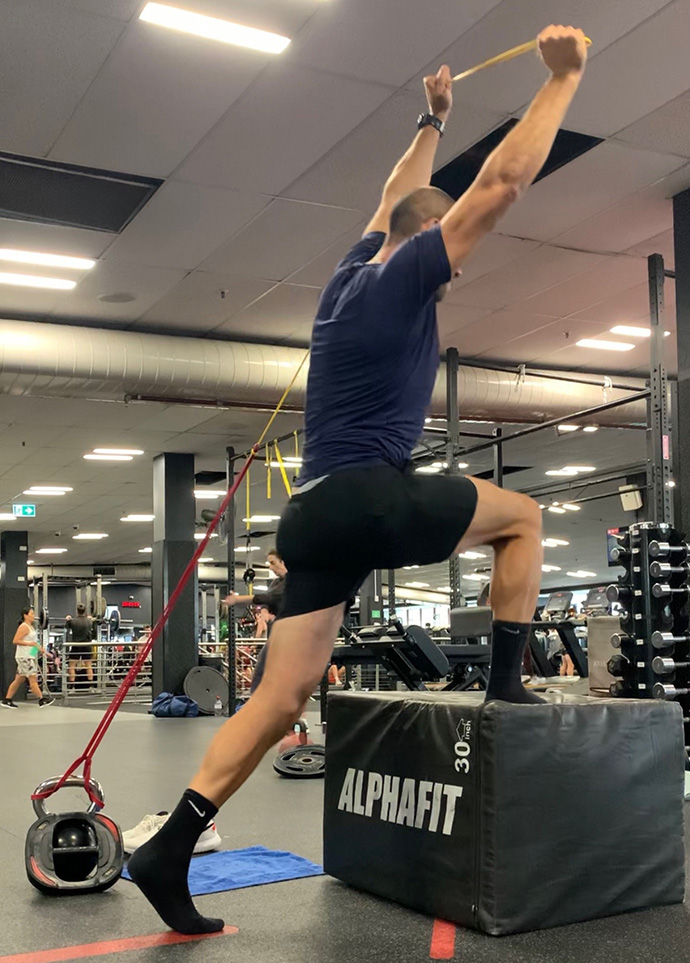Recently through the encouragement of mentors, I’ve come to find that developing a strong hip lock should be integral part of any athletic development program. The exercise is a popular movement in many professional training regimens, and for good reason. According to Frans Bosch, the hip lock position – achieved through the co-contractions of the glutes and trunk – is crucial for field-based sports involving running. There are various variations and modifications to the hip lock exercise that are commonly recommended by high performance professionals. Some of these include using or adding resistance bands, balls, boxes or weights to increase the intensity and complexity of the exercise or water down the movement so it is obtainable by athletes at all levels.
Here are three reasons why you should consider incorporating this exercise into your athletic performance program:
1. Improved Hip Strength
The hip lock helps to strengthen the muscles around the hip joint making it an effective exercise for building lower body strength, which is critical for athletes who need to sprint, jump, and change direction quickly. By strengthening these muscles that enforce this position, athletes can improve their overall speed, agility and power on the field.
2. Increased Rate of Force Development
The hip lock requires an athlete to generate explosiveness through the lower body, which can translate to improved athletic performance. It involves the coordination of the hip joints and lumbopelvic complex, resulting in a stable single leg stance. By training the hip lock co-contraction around the hip joint, muscle slack can be reduced leading to an increased rate of force development.
3. Reduction of Injury Risk through Improved Stability
Reducing the likelihood of injury is a high priority and the improved co-contractions of the hip lock position will help to stabilise the hip. The increases in the strength of the muscles around the hip joint will make the athlete more robust against perturbations and interactions with opponents, which in turn reduces the likelihood of injury.
In this wall drill example video, as I drive my knee I extend and reach through the entire stance side of my body. This exacerbates the hip lock function, allowing for improved co-contractions and greater stability.
In this progression video, I drive my knee from an overhead set up and also extend and reach through the entire stance side of my body with resistance from the light band. Exacerbating the hip lock function and holding the hip lock position before finding the box.
The hip lock can form part of a prep to train session, be used as a filler along with traditional strength and power training, or as a warm up exercise before field-based speed and agility training. Overall, incorporating hip lock training into an athletic program requires a thoughtful approach. With the right variations and programming, coaches can further help athletes unlock their full athletic potential.



